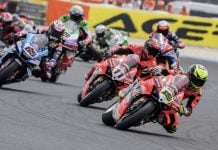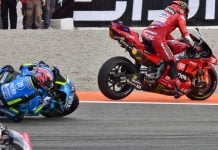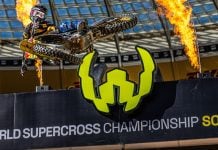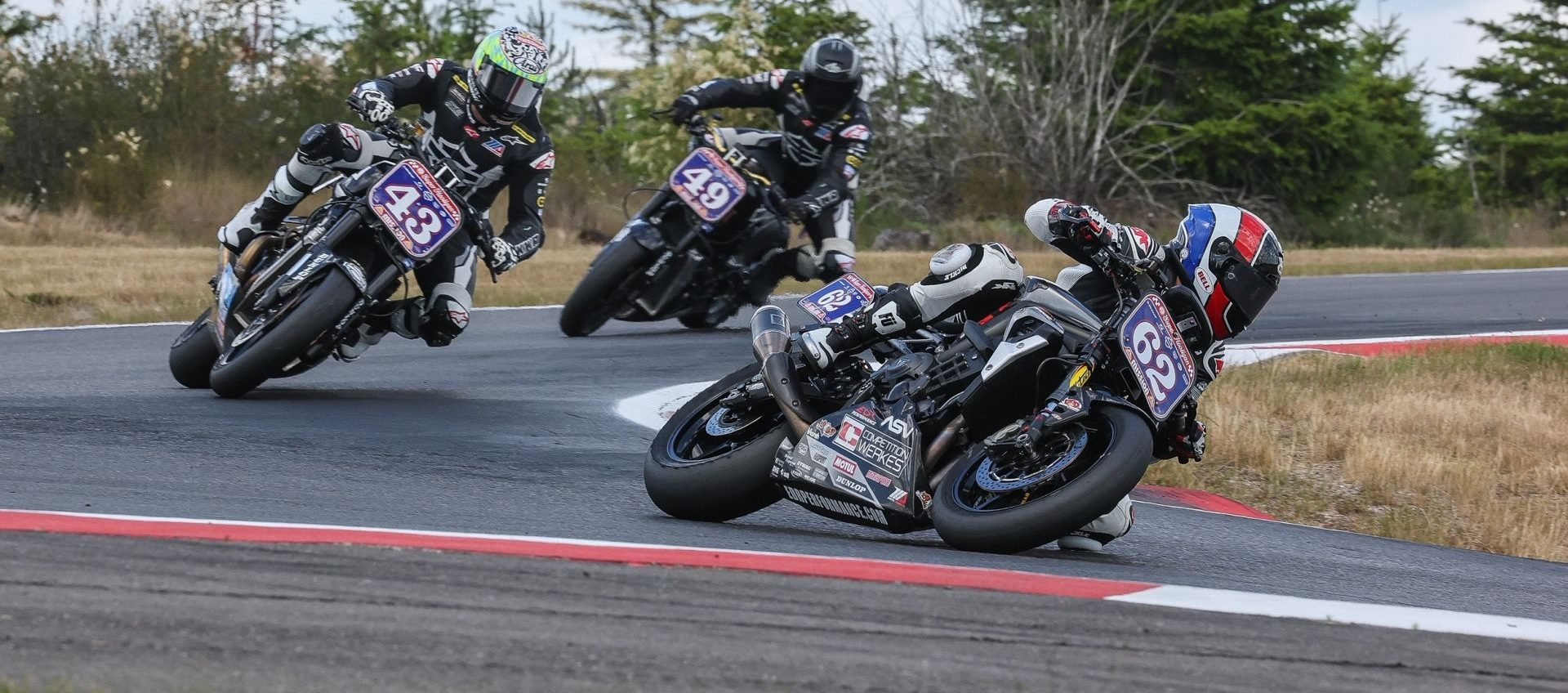History You Should Know About Super Hooligans, By a Racer
FIRST PERSON/OPINION:
By Andy DiBrino
For years the RSD Super Hooligan class has had a weight rule that has been a subject of controversy and debate. Though most of you would probably not know that, because it’s almost never talked about during the race broadcasts or published in articles. Only recently has the weight rule in the class come to the spotlight because of the Harley-Davidson Pan America teams being forced to add weight to their bike for “balancing” purposes for the last MotoAmerica round at The Ridge Motorsports Park. As a Super Hooligan racer myself who has had to run as much as 52 pounds of lead on my Super Hooligan bike, and whom was personally the reason a weight rule came into existence back in 2019, I felt it was injustice for people not to know the entire story here, and I felt that people should know this is nothing new that racers on other manufacturers of motorcycles in the class have had to do for years.
The goal of this article is to give you an unbiased presentation of the history of the Super Hooligans class, how it evolved over the years, and specifically how the weight rule has developed over the years, too. I will warn you though, it’s impossible for me to be completely unbiased given my position racing smaller displacement bikes against the big American V-Twins, and being weighed down myself for years due to the rules. Additionally, there is a long-format video you can watch that gives you full insight on my thoughts with the class right now if you want to know more on that. Now let’s dive into where things started, and how in the heck we ended up where we are today.
The History:
Hooligan racing was born in Southern California at Costa Mesa Speedway. They’d have Harley Nights where guys would race inappropriate street bikes and cruisers, like Harley Softails and other American V-Twins around a dirt track oval. It was a bit of a sideshow to the Speedway racing program there that developed into something more serious like Harley Sportsters and Indian Scout Sixtys with 19-inch flat track wheels and tires. In 2015 and 2016, some more serious events featuring Hooligan racing started popping up along the West Coast, like Dirtquake USA, The One Motorcycle Show, and SuperPrestigio. The momentum of it was catching on like wildfire, and come 2017, the first ever RSD Super Hooligan National Championship was a thing. It was a 10-round series, with prize money up for grabs at each event, and an Indian FTR 750 as the championship prize.
The core of the hooligans class was made up of working-class guys who raced for fun, and maybe downed a few beers while doing it. But with all that was on the line now, you had pro racers like myself jumping into Super Hooligans, looking to grab the treasures. Back in 2017 there was no weight rule for the class that was described as “Heavy Bike Racing.” The hot topic back then was whether or not pros should be allowed to race in the class.
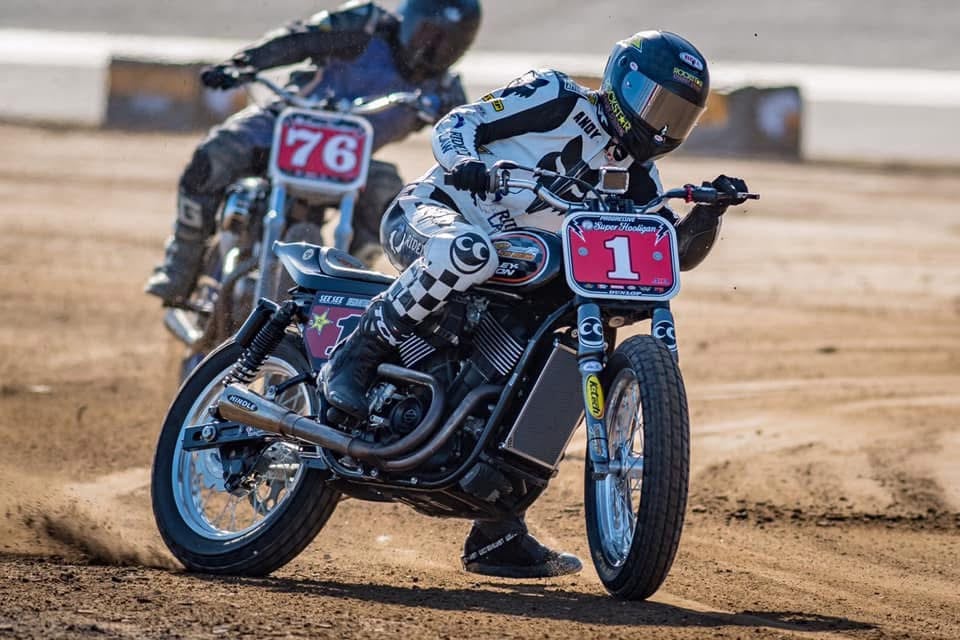
Fast forward to 2019: The rules didn’t really change, but RSD Super Hooligans became an official AMA sanctioned series. There wasn’t a lot of bike diversity in the class at the time. You had a few Indians, one Ducati, and an overwhelming majority of Harleys. A few rounds in, I debuted a KTM 790 Duke that had been converted into a flat track bike. It met the main rule of the class, which was that the bike had to be a 750cc Twin or larger. However the bike weighed almost 100 pounds less than the Harley Street 750 I won both the 2017 and 2018 Super Hooligan titles on. Roland Sands was excited to have a new manufacturer in the class. It took me three races to get my first win on the bike. Shortly after that win, a brand new weight rule was announced. It was no coincidence why the rule was made, it was directly because of my KTM. However I called the AMA, and they told the series that the rule was not allowed to be implemented mid-season, and I didn’t have to add any weight for the remainder of the 2019 series. The lightness of the KTM and how I had it built was certainly an advantage on some of the asphalt-TT tracks the series visited. However I lost the championship in 2019 to former Grand National Champion, Joe Kopp, who happened to be racing the Harley I raced the previous year to a title.
Going into 2020, Super Hooligan series officials were able to put a new 400-pound minimum weight rule into effect. They also had a brand new rule addressing the “Pro” rider situation, that was still kind of a source of division amongst the racers in the class. Essentially any professional flat track license holding rider who was current, or had held a license in the last year, was not eligible to score championship points. And on top of that, they’d only pay out prize money for up to 3 or 4 races. So pros were still allowed to race in the class, just not compete for championship points and contend for overall standings. I remember feeling personally singled-out by this rule, because I was pretty much the only guy who was fighting for titles and held a pro license at the time. Also it didn’t seem fair that an ex-GNC winner like Joe Kopp who hadn’t held a pro card for years, but who certainly is one of the best flat trackers ever and would still go out and kick pretty much everyone’s ass in American Flat Track, was still totally free to race in the series for the championship he had just won in 2019. I went out on my KTM 790 hooligan flat track bike, now weighing an extra 60 something pounds, and won the first Super Hooligan race of 2020. The new weight rule actually helped my bike get traction, which was a big struggle for me in 2019 when the bike was lighter. COVID happened soon after and the series got cancelled after two rounds, so none of it even mattered.
Going into 2021, things were kind of silent from the RSD Super Hooligan series on what was going on and whether or not there would be a series coming back. On social media, the RSD crew was seen testing their hooligan flat track Indian FTR1200s at Chuckwalla and Buttonwillow. They had been converted over to road racing trim. In mid-May the press releases went out announcing the RSD Super Hooligan QuaTTro, which was a 4-round series that was made up of one road race, and three flat track races. The road race was at Laguna Seca in conjunction with MotoAmerica on July 9-11.
The announcement gave racers very short notice. The new series came with a new rule that was unique to that year’s series, which was that if any racer rode a different bike at any point in the series, they’d receive a 10 point penalty. And the pro rule from 2020 was discarded. The scramble to get ready and come up with a plan was tough for racers like me. I had a dedicated flat track bike for Hooligan racing, but to convert it over to road racing made no sense from a time, money and bike competitiveness standpoint. The core of the series was made up of flat trackers after all, who kind of felt alienated by this road race deal. Some of them did what they could to attend Laguna, but Laguna brought in an almost entirely new crowd of racers.
The first round at Laguna Seca was sketchy to say the least. Basically anyone was allowed to race. A personal friend of mine who had one track-day ever under his belt was allowed to race. There was not a lot of depth of talent in the field. It was Chris Fillmore and I who checked out on new KTM 890 Duke Rs (that had lead weight bolted on to meet the 400 pound rule they still had), and David Kohlsteadt on one of the RSD Indian FTR1200s who finished 3rd. A few other names you’d recognize in the field included Cory West on some sort of Aprilia supermoto type bike, Frankie Garcia on an RSD Indian, and Patrica Fernandez-West.
Moving into the three flat track rounds, they definitely weren’t as well attended as years past. And the only racers who had bikes that competed in both flat track and road racing events were the RSD Indian FTR1200 riders, and Cory West (Cory only attended two rounds). It was basically an entirely different field of racers compared to Laguna Seca. I believe only five riders total had made all four rounds. I was one of them, but I did get that 10-point penalty for riding an 890 Duke R at the Laguna round, prior to switching to my flat track bike for the three flat track events. One of the other five racers who rode a different bike, but wasn’t in the championship hunt, was not given his 10 point penalty. So that penalty came into play in my case, causing me to just lose out on the title to a pro flat track racer who skipped the first-round road race, and won all three flat track races. I want to keep this article unbiased, but I will say, why would you want to penalize one of the few racers who attended all your rounds? The rule was strange. If their goal was to have racers do all four rounds, they failed pretty badly if five out of over 50 unique entrants did all of them.

Moving into 2022 is where things got really interesting. MotoAmerica announced a three-round series for Super Hooligans, featuring four total races. RSD Super Hooligans was now a full-on road racing series. New for 2022 was a 420-pound minimum weight rule. Kind of an odd number, but it fits the theme of the class. The shift into MotoAmerica full-time also came with new technical regulations for the class, which are very similar to the stuff you see in other MotoAmerica classes as far as bike preparation and safety go, as well as a list of things you are allowed to modify or not. The main rule that really dedicated bikes that were allowed in the class was a horsepower limit of 125 bhp claimed by the manufacturer (In 2024 it changed to 128 bhp). The bikes must come with handlebars, not clip-ons, and no fairings. Remember that horsepower rule, that becomes important soon.
My KTM 890 Duke R at the time had 52 pounds of lead weight bolted on it in 2022. I had to secure it under the engine inside the belly pan just like the Harleys are doing now, as well as bolting a chunk to the frame where the stock catalytic-converter used to sit, as well as drop an 11-pound weight into a space inside the subframe. With Super Hooligans being a road race class now, it had a lot of air-cooled Harleys that were way off pace, but we saw an influx of brands like BMW with the R nineT, Ducati Hypermotard and Monsters, KTM 790 and 890 Dukes, Indian FTR 1200s, Suzuki SV1000s, and even electric bikes from Energica and Zero Motorcycles.
Every round that year, the bikes were developed and teams made improvements. The KTM 890 Duke R I was on was already a fairly-well-set-up bike for road racing, minus all the weight we had to put on one to race (along with some of the other brands in the class). The Indians were more powerful, but weren’t as well suited to the track off the showroom floor as the KTM. We started seeing custom fuel cells, subframes, swingarms, triple clamps, and whatnot being built for those bikes.
Moving into 2023, the minimum weight rule was reduced to 397 pounds, and the big change to the now four-round race series (totaling eight races) was the addition of the Harley-Davidson Pan America 1250cc bike being homologated (with a few restrictions like an airbox cover for example). The Pan Am claimed a whopping 150 bhp, which was 25 bhp over the legal limit for the class. When it won at Daytona on its debut weekend, it got protested and ultimately disqualified due to missing some (or all) of the specified parts required to “de-tune” it, sparking a fierce rivalry in the class between the Factory Indian and Harley teams. Also that weekend, we saw a major gap between the Harley and Indians over the rest of the field, which brought the weight rule into question as the rest of the field had trap speeds upwards of 10 mph slower than the Indian FTR1200 and Harley Pan-Am. The weight rule was lowered to 377 pounds thereafter. The goal of this was to try to allow the lower displacement bikes to have a weight advantage since the American V-Twins had a major horsepower and torque advantage. Both the Factory Harley and Indian teams had been spending so much money to develop their bikes, and not only did they have the power, they had really good handling and stopping power to pair with it. On the Indian FTR1200s specifically, we saw Ohlins forks and Brembo brakes on the front end of their bikes that cost more than some of the bikes on the grid entirely.
The 2024 season saw the lifting of some of the restrictions on the Harley Pan-Am. The class also made three-cylinder bikes up to 900cc legal, opening the class up to more than just twins and electric bikes. Yamaha was able to enter with the MT-09/ XSR900, and Triumph with the Street Triple 765 RS. Harley went on to win the title, beating series sponsor, Indian Motorcycles. There was a lot of discussion in Parc Ferme after racing was over at the 2024 series season finale at Circuit of the Americas, about what they were going to do to the Harley that “had gotten out of control” in the words of someone involved in the series whose name I don’t want to drop. Indian ended up discontinuing the FTR1200 for 2025, which opened up the series to a new title sponsor, Harley-Davidson. Roland Sands had worn an Indian Hat since at least 2016, and now he rocks the Bar and Shield. The class has always been a business for Roland. But at times, you might wonder if there are conflicts of interest? Certainly there was in 2022 when the series was sponsored by Indian Motorcycle, and Roland fielded an Indian-supported team in his own class and his own team won the championship with Tyler O’Hara.
Who controls Super Hooligans? Certainly Roland has involvement, but so does MotoAmerica. What the balance of power is between the two is, remains a bit unknown. Roland has always been an advocate for getting more manufacturers into the class, but I personally know a few brands that are reluctant to get involved with the series, because from the outside looking in, it looks like a straight-up marketing ploy for whoever the title OEM sponsor is. However, you could say that both Roland and MotoAmerica are trying to do the right thing, by implementing a lower weight rule for bikes under 1000cc at the second round of the season this year at Road Atlanta (now 365 lbs). This was a byproduct of another Daytona decimation of the field by the Pan-Am. And now they have implemented the 450 pound minimum weight rule for the Pan-Am specifically.
Did all the weight changes really help? Well, the lower minimum weight rule for the non-Harleys didn’t do a thing at Road Atlanta to help close the gap to the Pan-Ams. And the weight deal on the Pan-Ams you could argue both ways after seeing what we saw at The Ridge Motorsports Park whether it worked or not. For the first time all year, I was personally able to break up the Harley podium with my Triumph 765 RS Street Triple in Race One with a third-place finish. This is the only podium for a manufacturer other than Harley-Davidson all year so far. I was also able to grab pole position. The Ridge is my home track and this is the best track on the calendar for my bike, so I don’t think it came to any surprise that a Triumph or Yamaha could run at or near the front of the pack. But even with the Harleys being heavier, they were all faster this year than they were in 2024. Jake Lewis turned a 1:45.554 in Race Two at the Ridge in 2024. This year he turned a 1:44.905 with all the weight on his bike in Race One. I think the real test for the weight rules is going to be at Laguna Seca, where you have a lot of corners where getting a good drive off the corner is important, and you have that big climb up to the top of the corkscrew. I haven’t been to Mid-Ohio before, but I hear it has a pretty long straightaway where the Harleys still might be able to break away from the rest of the pack.
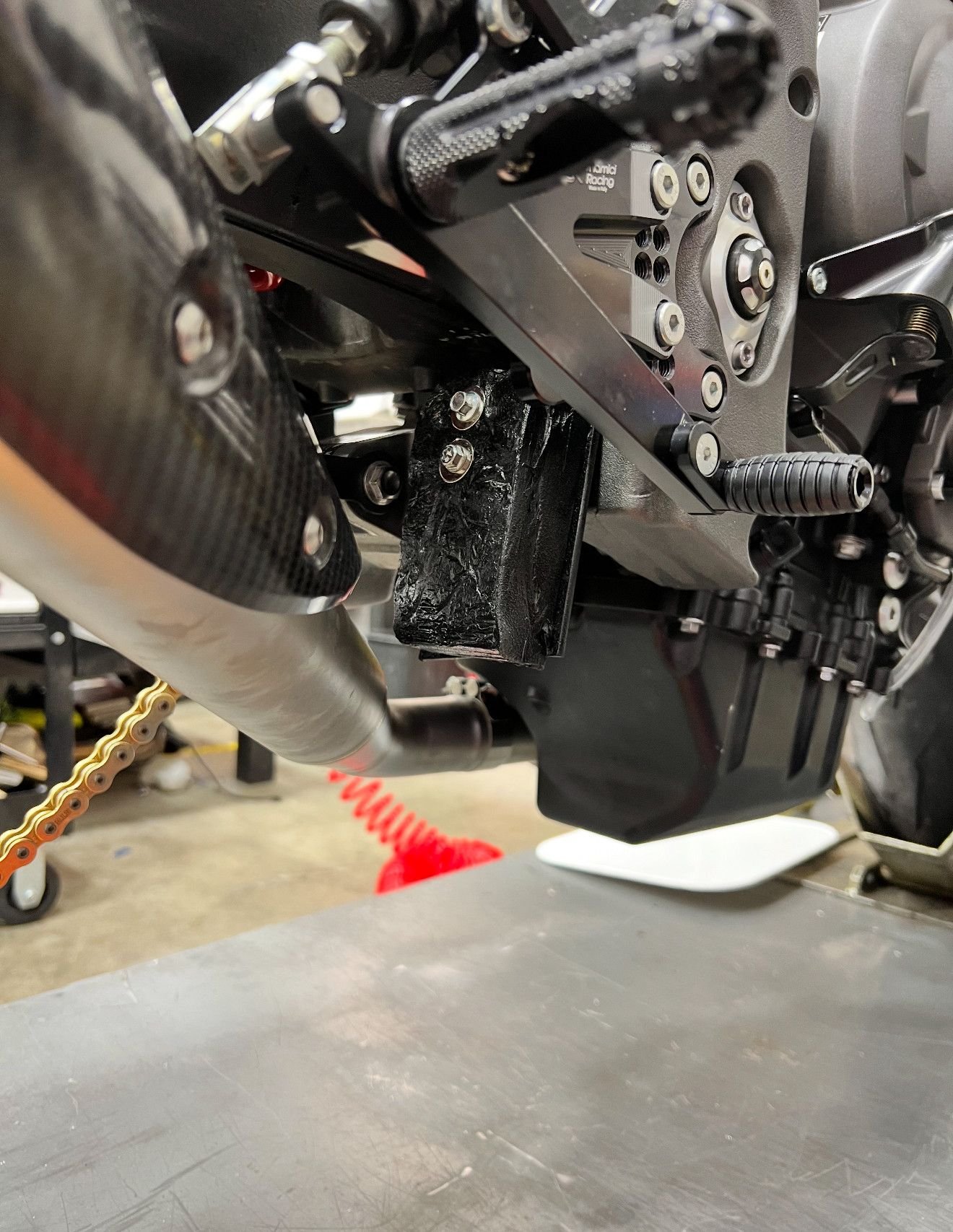
There is still a bit to be figured out on the Super Hooligan class balancing and how to manage that. Afterall, there is such a diversity of bikes and talent levels. It is definitely not an easy task, and I am not here to attack the series about that. I have been pleasantly surprised this year by the willingness to make changes to the rules, and the speed at which they’ve been implemented. I am personally looking forward to the next two rounds for the class at Laguna Seca and Mid-Ohio, and seeing how this all unfolds. I really like this series, and I hope to see it grow in a positive direction for the benefit of everyone in the class.
Thanks for reading, and be sure to check out my YouTube video titled “MotoAmerica RSD Super Hooligans Talk: UNRESTRICTED” if you want to know more about my opinions along with the opinions of my engine builder, Eric Dorn.


